AI Overviews Are Eating Your Clicks - Here’s What We Found After Analyzing 2,540 Top-Ranking Keywords

Oussama Bettaieb
Marketing Director
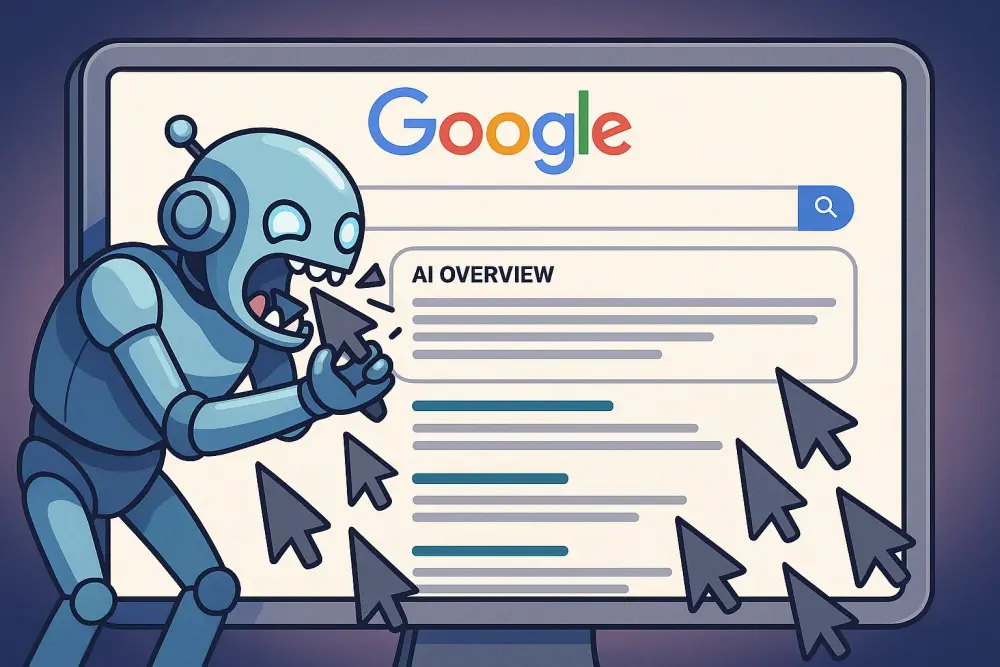
Share to AI
Ask AI to summarize and analyze this article. Click any AI platform below to open with a pre-filled prompt.
Over the last few months, I’ve been digging into something that’s been messing with organic performance across dozens of client dashboards: AI Overviews.
We all know Google’s AI-generated summaries are now showing up for a ton of keywords. But the real question is: what impact are they having on the pages that already rank in the top 10?
So, I did what any mildly obsessed SEO would do - I built a data set.
- 2,540 keywords
- 5 industries
- Top 10 ranking positions only
- Segmented by intent, industry, and whether an AI Overview (AIO) was present
The goal?
To understand if ranking top 10 even matters anymore when AI Overviews show up and what (if anything) we can do about it.
Let’s dig in.
But First... What Exactly Are AI Overviews?
If you’ve been paying attention to Google’s SERPs lately, you’ve probably seen a big colored box at the top that summarizes your entire search query before you even scroll.
That’s an AI Overview.
It’s part of Google’s rollout of generative AI in search. Instead of showing just ten blue links, Google now tries to answer the question directly with a machine-generated summary pulled from multiple sources.
These AI Overviews are meant to make search “faster and more helpful” for users. But here’s the catch:
They push organic results further down and give users fewer reasons to click through to your page, even if you’re ranking #1.
Let’s see what the full impact is now!
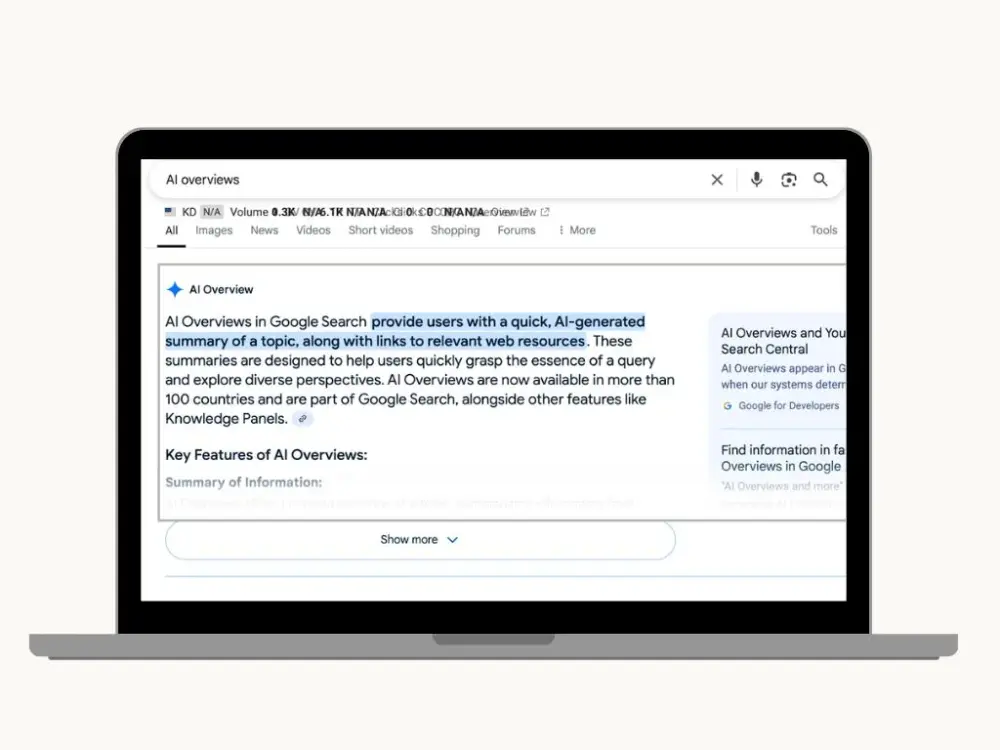
📊 AIOs Are Everywhere - 78.9% of the times
I started with volume. How often do AIOs actually show up for top-ranking queries?
Across all five industries I analyzed, more than half of the keywords triggered an AI Overview. In outsourcing-related verticals, that number was over 70 percent. To be more exact, the number was 78.9%. YES, more than three-quarters of the analyzed keywords showed AI Overviews.
If you are curious how that looked like per industry, here is a breakdown of the industries we analyzed

So yeah.. if you thought your #1 ranking insulated you from AIOs, think again.
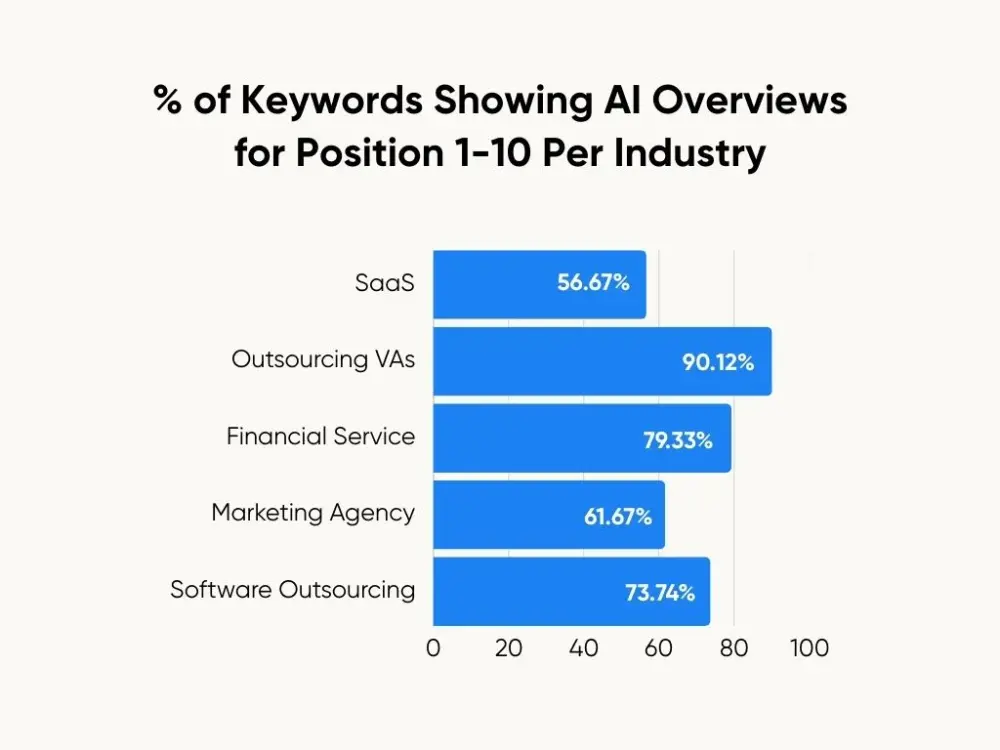
📉 AIOs Are Cutting Into Clicks - Even If You Rank Well
This is where it gets painful. I looked at click behavior changes for pages ranking in the top 10, comparing cases with and without an AI Overview present.
With AIOs:
The average click drop was -0.2692
- Most industries saw flat or negative click movement.
- The worst hit was Outsourcing VAs, down -1.1 clicks per query.
- Even industries that looked “neutral” like Financial Services showed little upside (+0.59 at best).
Without AIOs:
The average click change was 0.0317
- Click performance was slightly better across the board - but still volatile.
- No industry showed sustained gains without AIOs either.
🟥 Conclusion: AI Overviews siphon clicks from traditional organic listings, even if you rank in the top 3.
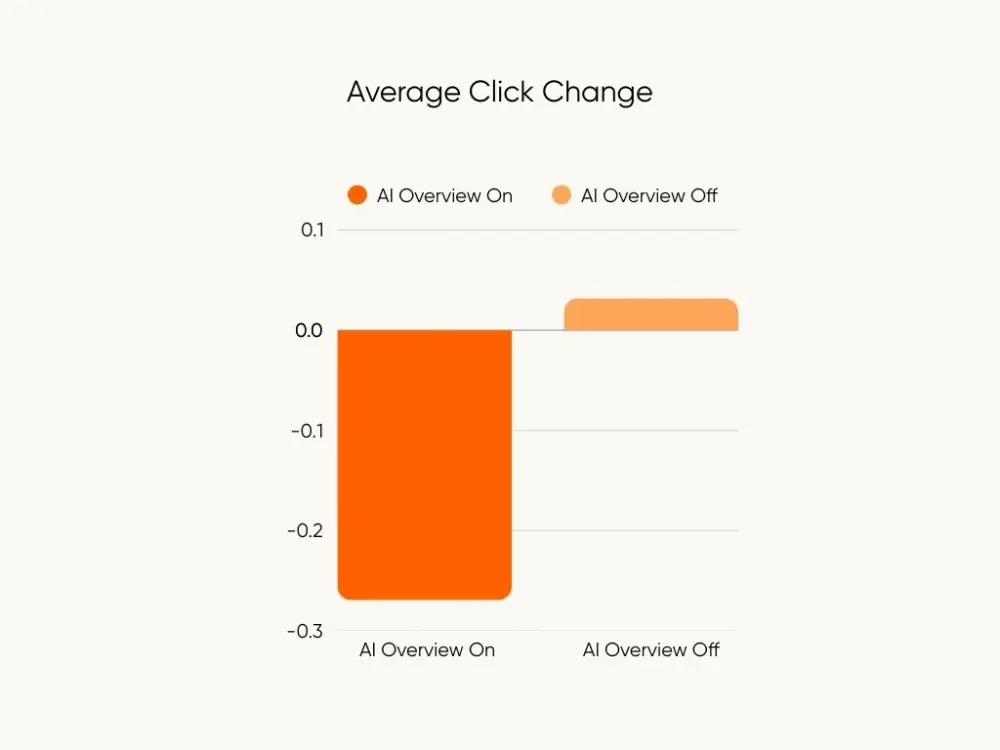
👀 Impressions Go Down… This Surprised Me!
Interestingly, impressions often decreased when AIOs were shown following the same pattern for clicks.
This makes me question a now-familiar pattern:
AIOs boost visibility but don’t send traffic.
What I noticed across the 5 industries, whenever AIO is on, impressions seem to be lower (except for one outlier)
The takeaway?
AIOs do not amplify awareness, and they break the click chain.

🧠 Intent Matters: Bottom-Funnel Queries Take the Biggest Hit
Once I segmented the data by intent, things got even clearer.
The most valuable keywords, the ones closest to conversion, are the most vulnerable.
When AIOs appeared, transactional and commercial queries took the biggest hits in clicks.
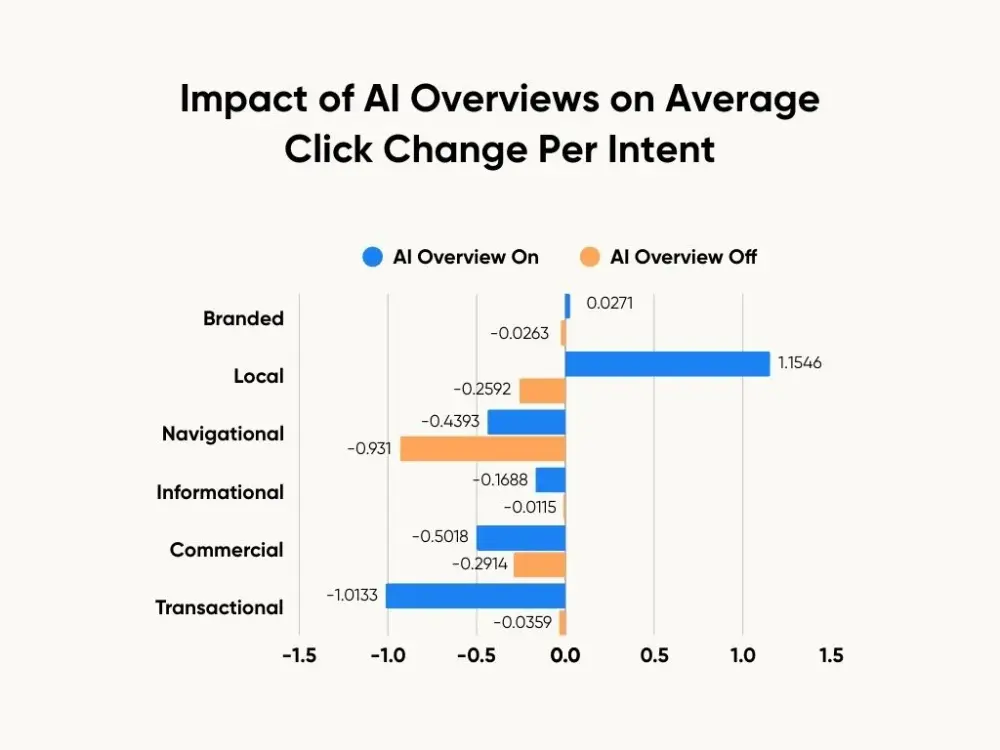
Interestingly, AIOs resulted in more Impressions for transactional and commercial keywords but definitely fewer clicks.
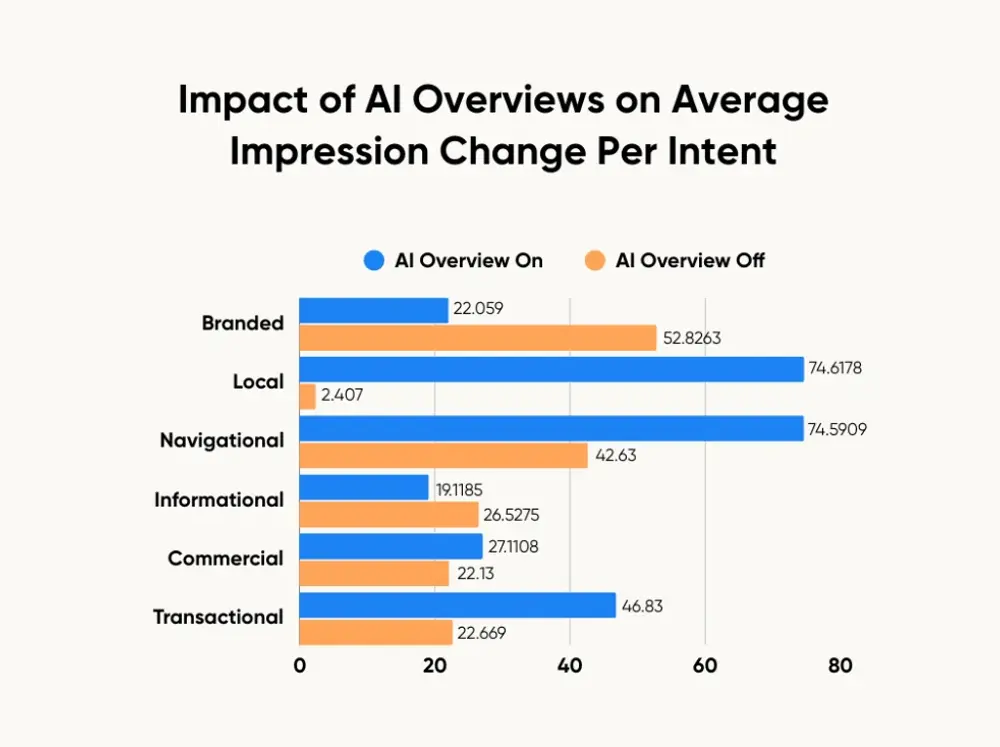
In contrast, branded and navigational terms had more volatile impression deltas depending on the industry.
The big picture: the closer the query is to conversion, the more AIOs cannibalize clicks.
🔠 Longer Queries = More AI Overviews
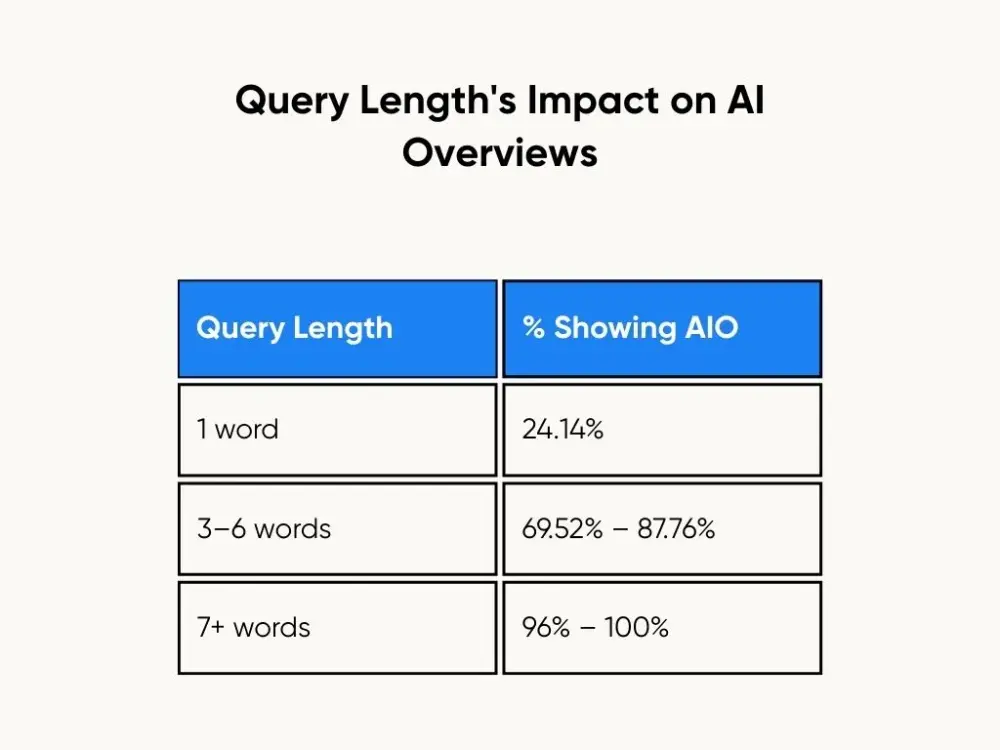
This one’s wild: the longer your keyword, the more likely it is to trigger an AIO. I always saw this in many LinkedIn posts from famous creators, but I could not believe it 100% until I saw it.
If you’re targeting long-tail keywords (like most B2B content teams), you’re almost guaranteed to compete with an AIO.
🔗 Want to Be in the AIO? Backlinks Still Matter
I also looked at which pages actually got featured inside the AIO, and whether backlinks had anything to do with it.
Turns out:
- 691 total page appearances in AIO from 109 pages
- 477 of those had backlinks ( 27 pages) - backlinks seem to impact your chances to be featured in AI overviews.
So while backlinks don’t guarantee AIO inclusion, pages without backlinks were featured less often.
TL;DR: Backlinks still matter - but they're more about improving your chances of being cited than ensuring it.
🧱 Meta Structure Affects Inclusion
📝 Meta Title
I also tracked how meta title and description length affected AIO citations.
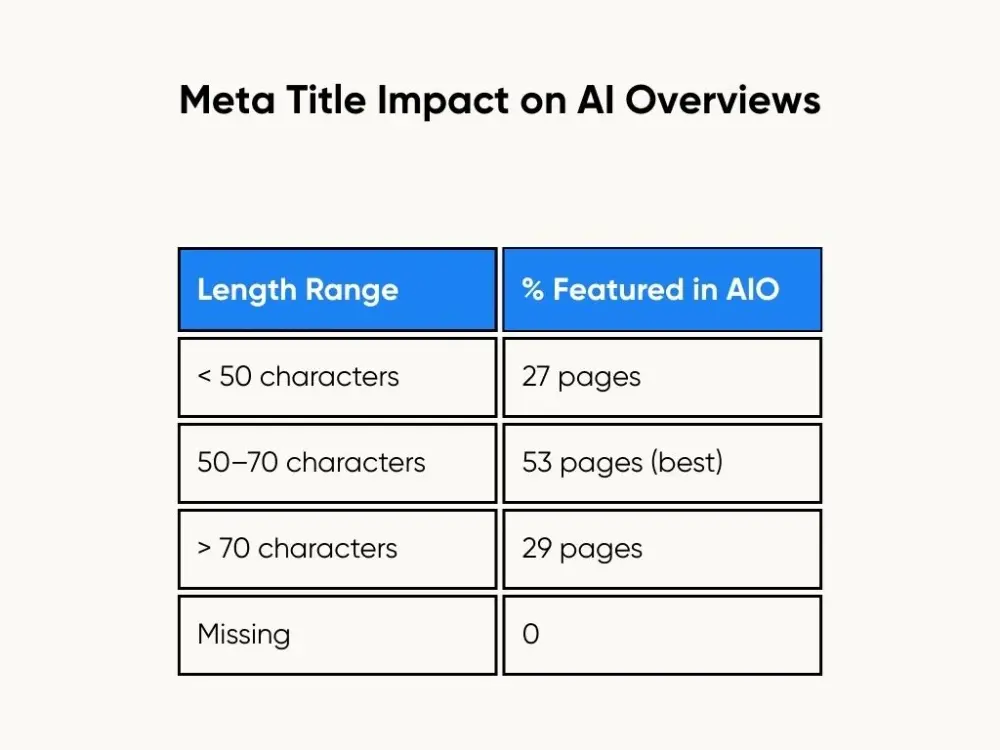
→ Sweet spot: 50–70 characters. Clear, concise, and optimized for inclusion.
📝 Meta Description

→ Ideal length: 80–160 characters. Anything shorter basically disqualifies you.
✅ Getting Featured in the AIO Softens the Blow - to an extent

The final insight might be the most actionable:
If your domain is featured inside the AIO, the hit to clicks is still there, but impressions jump.
Your best defense? Show up inside the AIO - not just beneath it.
The game is now shifting to become more about branding rather than ranking. You show up in AIO but do not necessarily get the clicks. Make sure people can remember you.
Final Thoughts: What This Means for SEO Teams
Here’s the hard truth: ranking in the top 3 isn’t enough anymore.
If Google decides to generate an AI Overview, your page will still rank - but it may no longer be the user’s first click.
That doesn’t mean give up. It means adapting.
Here’s how to adapt:
- Don’t just rank - optimize for AIO visibility
- Strengthen your backlink profile
- Nail your meta titles and descriptions - classic On-Page SEO Move
- Track long-tail queries more closely
- Monitor which of your URLs appear inside the AIOs - not just on the SERP
SEO isn't dead. But it's evolving. And if you're not accounting for AI Overviews in your content strategy, you're playing the wrong game.